Discovering the Best of Washington D.C.: A Guide

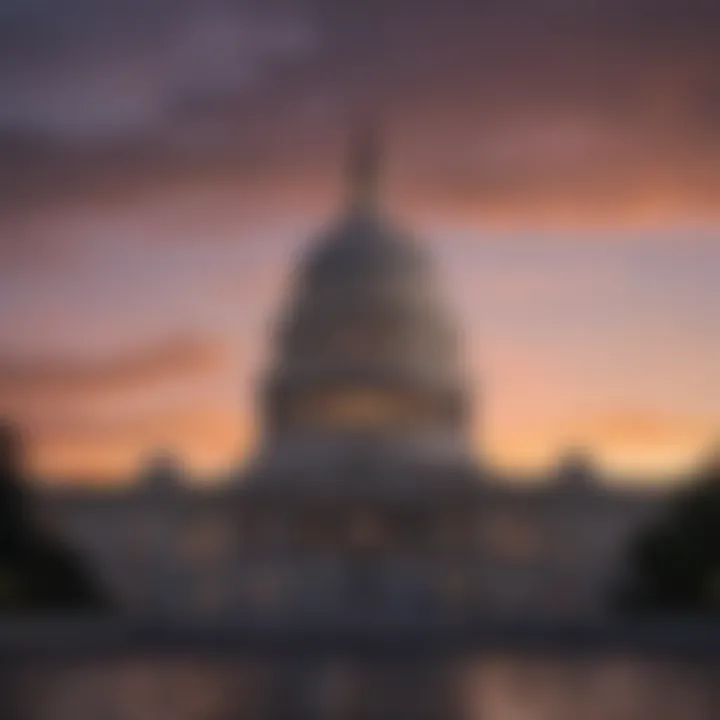
Intro
Washington D.C., the beating heart of the United States, is more than just the seat of power. It’s a vibrant tapestry woven from a rich history and an eclectic blend of cultures. As one strolls through the streets, a sense of nostalgia accompanies the majesty of the architecture. From iconic monuments like the Lincoln Memorial to charming neighborhoods such as Georgetown, every corner tells a story.
This guide seeks to shine a light on a range of locations throughout the capital. While the well-trodden paths to places like the National Mall are undeniably essential, this exploration digs deeper into spots that may slip under the radar, revealing hidden treasures that enrich the Washington D.C. experience.
Our aim is to offer a comprehensive approach encompassing not only historic landmarks and museums but also neighborhoods bustling with character and memorable experiences. With the beautiful blend of history and modernity, the city encapsulates a unique flavor that beckons both visitors and locals alike to embrace its offerings, whether through art, architecture, or gastronomy.
By the end of this journey, readers will have a clearer picture of Washington D.C.'s best locations, making it easier to navigate and appreciate the city’s layered history. Through inquisitive exploration, everyone can find something that resonates deeply, be it a favorite café on a quaint street or a majestic statue that inspires awe. The city certainly rewards those who venture beyond the obvious.
Historical Landmarks and Monuments
When one thinks of Washington D.C., historical landmarks and monuments immediately spring to mind. These sites are not just stones or sculptures; they embody the collective memory and identity of the nation. They tell stories of trials and triumphs layered over centuries, shaping the capital into what it represents today. Not only do these landmarks draw millions of visitors each year, but they serve as touchstones for discussions on democracy, justice, and civil rights.
The Lincoln Memorial
Nestled at the western end of the National Mall, the Lincoln Memorial is an iconic testament to President Abraham Lincoln, renowned for his efforts in abolishing slavery and leading the United States during the Civil War. This structure, with its imposing white marble columns and the famous seated statue of Lincoln, is much more than a memorial. It has become a backdrop for pivotal moments in American history, such as Martin Luther King Jr.'s "I Have a Dream" speech in 1963. The design, based on ancient Greek temples, evokes a sense of gravitas and integrity, making it a popular spot for both reflection and protest. Its serene location, particularly at dusk, invites visitors to ponder the values Lincoln represented.
The National Mall
The National Mall serves as the heart of D.C., where history, architecture, and nationhood converge.
Key Attractions Along the National Mall
Within this sprawling green space, numerous key attractions beckon visitors. From the Smithsonian museums to the grand memorials, these sites offer a wealth of experiences. The National Gallery of Art provides a glimpse into artistic marvels, while the World War II Memorial honors the sacrifices made during global turmoil. The unique characteristic of the National Mall is its blend of educational and solemn attractions, making it easy for a visitor to spend an entire day exploring. However, one must be prepared for the inevitable crowds, especially in peak season.
Best Times to Visit
When planning a visit to the National Mall, timing is everything. The best times to experience its beauty are during the spring and fall. During spring, the cherry blossoms create a picturesque canvas, drawing photographers and nature lovers alike. Fall, on the other hand, gifts visitors with vibrant foliage and milder weather, transforming the landscape into a palette of red, gold, and brown. It's crucial to note, however, that weekends during these seasons can be particularly crowded, so visiting early in the day or on weekdays may provide a more tranquil experience.
The Washington Monument
Standing tall against the D.C. skyline, the Washington Monument symbolizes the nation's founding father, George Washington. Reaching a towering height of 555 feet, it is one of the most recognized structures in the country. The monument's construction faced numerous delays, including funding issues and the Civil War, but it stands complete today as a stirring reminder of Washington's leadership. The unique option to ascend and take in the panoramic views of the city is an exhilarating experience, making it a must-visit for those who want to grasp the layout of the nation's capital.
The U.S. Capitol Building
As the seat of the United States Congress, the U.S. Capitol Building is steeped in political significance. With its impressive dome and stunning neoclassical architecture, it attracts visitors eager to learn about the processes that shape the country. Guided tours offer insights into the legislative branch of government, allowing individuals a glimpse behind the scenes of American democracy. Positioned at the eastern end of the National Mall, its stature commands a respect that mirrors the gravity of the decisions made within its halls.
Cultural Institutions
When diving into the heart of Washington D.C., one cannot overlook the rich array of cultural institutions that serve as a cornerstone of the city’s vibrant identity. These organizations, which include museums, galleries, and performance centers, are not only repositories of art and history but also active participants in shaping the cultural landscape of the nation’s capital. They offer a chance for visitors and residents alike to engage with a diversity of perspectives, showcasing everything from art movements to historical narratives that have influenced society.
One of the standout elements of D.C.'s cultural scene is its accessibility. Many institutions are free, encouraging a broad audience to explore and learn. This accessibility is critical; it allows everyday people, regardless of their background or financial status, to engage with rich cultural experiences. Understanding the importance of these institutions allows one to appreciate why D.C. is often deemed the cultural heart of the United States.
The Smithsonian Institution
Overview of Smithsonian's Museums
The Smithsonian Institution, a network of museums and research facilities, stands as a beacon of knowledge in Washington D.C. Its collection is vast, comprising over 154 million objects that span art, history, science, and cultural heritage. Each of the 19 museums, located mostly on the National Mall, offers a unique insight into various facets of human Innovation and experience. Whether you are wandering through the National Air and Space Museum or contemplating the exhibits at the National Museum of African American History and Culture, the breadth of knowledge contained within these walls is staggering.
What makes the Smithsonian particularly compelling is its commitment to education and research. It's not just about showcasing items; it's about fostering an understanding of the world. The hands-on exhibits in many museums allow visitors to engage deeply, piquing interest among all age groups. However, with such a rich experience comes the challenge of crowd management, particularly during peak tourist seasons when the most popular exhibits can feel overwhelmingly congested.
Visitor Information
To make the most of your visit to the Smithsonian, understanding visitor information is crucial. The museums are open every day of the year except for December 25. Their operating hours vary, so checking the website beforehand can save a lot of time and ensure you don’t miss out on key exhibits. As these institutions are strategically located on the National Mall, they are easily accessible via the D.C. Metro system, which adds a layer of convenience for commuters and tourists alike.
Another important factor is that many exhibitions require timed entry tickets which can be reserved in advance online. This method has proven to be an excellent way to manage queues. However, last-minute visitors might find it challenging if tickets sell out, especially for sought-after attractions. Visitors should also keep an eye out for occasional special events and workshops, which provide deeper dives into specific topics, making for a more enriching experience.
The National Gallery of Art
The National Gallery of Art highlights itself as an iconic space dedicated to the visual arts. The collection comprises European and American masterpieces, showcasing everything from Renaissance paintings to modern sculpture. One could get lost in the halls filled with works by greats like Van Gogh, Monet, and Calder, making it a paradise for art lovers. The addition of outdoor sculptures complements the indoor galleries, providing a dual experience of breathing fresh air while enjoying artistic brilliance.
The John F. Kennedy Center for the Performing Arts
Located along the Potomac River, the John F. Kennedy Center for the Performing Arts is not just a building but a living celebration of the performing arts. Hosting a variety of shows ranging from opera to contemporary dance, it serves as a hub for artistic expression. The center’s free daily concerts on the rooftop terrace provide a unique opportunity to enjoy live performances against the backdrop of the city’s breathtaking skyline. Moreover, its commitment to promoting arts education resonates strongly within the community, making it a vital part of D.C.'s cultural scene.
Parks and Recreation Areas
Parks and recreation areas in Washington D.C. provide essential green spaces that offer a breather from the bustling urban life. They serve as vital locales for both residents and visitors looking to unwind amid nature's embrace. Moreover, these areas accentuate the beauty of the city while promoting outdoor activities, well-being, and community bonding. Whether it's taking a serene stroll, engaging in picnics, or simply soaking in the surroundings, the opportunities for leisure abound.
Rock Creek Park
Hiking and Nature Trails
When it comes to hiking, the trails in Rock Creek Park stand out remarkably. This 1,754-acre sanctuary brings the great outdoors right into the heart of the city. Enthusiasts from all walks of life flock here to traverse its myriad paths. The key characteristic of these trails is their variety. From easy walks suitable for families to challenging routes that test your endurance, there's something for everyone.
A significant unique feature of the trails is how they meander through diverse ecosystems, revealing stunning views that change with the seasons. However, navigating these trails does require awareness of the park's layout; it can be easy to lose your way due to dense vegetation. Yet, the sense of adventure is what many hikers treasure, making it a popular choice for those keen to escape the concrete jungle while staying within city limits.
Wildlife Observation
Wildlife observation in Rock Creek Park provides an excellent opportunity to connect with nature in a unique way. The key characteristic of this aspect is the rich biodiversity of the park, where deer, foxes, and various bird species are often seen. This diversity attracts both amateur birdwatchers and professional naturalists alike. Many find it rewarding to spend hours observing the behavior of these creatures, capturing stunning photographs or simply enjoying the moment.
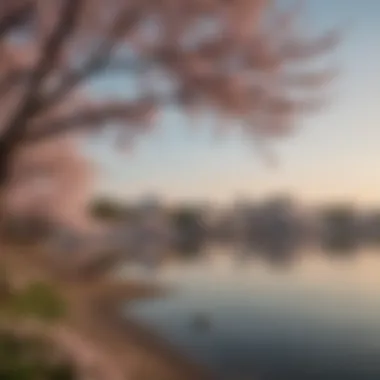
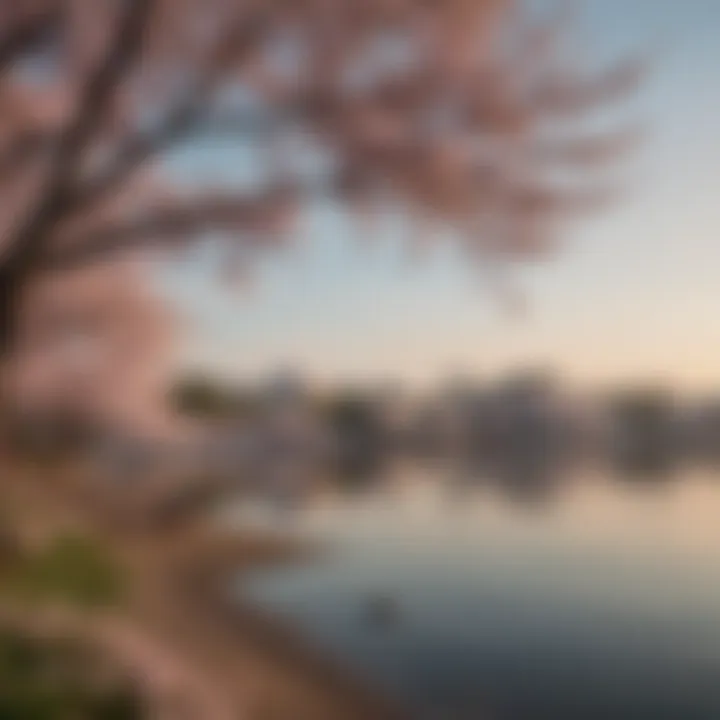
A unique feature of wildlife observation here is its accessibility. Unlike many national parks that require travel to far-off lands, you can immerse yourself in wildlife just a stone's throw from downtown D.C. That said, patience is essential; sometimes the creatures can be shy. Nonetheless, for those willing to wait, the rewards—like spotting a rare bird in flight—are unforgettable.
The Tidal Basin
Cherry Blossom Views
The cherry blossom views at the Tidal Basin are nothing short of spectacular, particularly during the spring bloom. The sight of thousands of cherry trees draped in delicate pink and white blooms creates a picturesque scene that captures the essence of renewal. What makes this place particularly beneficial is the annual Cherry Blossom Festival, attracting visitors from all corners of the world. It's an event that celebrates not only the trees but also the friendship between Japan and the United States.
The unique feature of cherry blossoms is how they symbolize fleeting beauty, reminding onlookers of life's transience. However, as breathtaking as these blooms are, their season is unfortunately short-lived. Timing your visit is crucial because the blossoms only last about two weeks once they bloom. If you hit it right, however, you’ll witness one of nature's most splendid performances.
Historical Significance
The historical significance of the Tidal Basin is deeply woven into the fabric of Washington D.C.'s identity. It's not just a beautiful place; it's surrounded by monuments and memorials like the Jefferson Memorial, adding layers of cultural relevance. This aspect provides a meaningful context to the area, making it compelling for history buffs and casual visitors alike.
One key characteristic of this historical significance is its connection to pivotal moments in American history; the basin has often been the site of large gatherings and events, embodying the spirit of democracy and unity. The unique feature of this locale lies in how it combines both scenic beauty and profound history, offering a rich experience that spans generations.
Meridian Hill Park
Meridian Hill Park invites visitors to explore its striking landscape and serene ambiance. Known for its terraced design, the park offers an intricate design that includes cascading fountains and statues that embody artistic expression. Finding a peaceful spot here to read or simply reflect is easy, making it a great retreat amid a busy day. The park is also a hub for community events, from drumming circles to fitness classes, fostering a sense of togetherness.
The unique feature of Meridian Hill Park is that it successfully blends urban life with natural beauty. Still, it's worth noting that some visitors might find it less well-known compared to other locales in D.C., which can be both an advantage and a disadvantage. Those looking for a quieter, more intimate experience will be delighted, while those wanting more buzz might feel it lacks the excitement found elsewhere.
Neighborhoods to Discover
When you think of Washington D.C., the epic monuments and museums might come to mind first; however, the neighborhoods tell a different but equally compelling story of the city. Each neighborhood has its unique heartbeat, blending history, culture, and community into a vibrant tapestry that offers visitors both exploration and immersion. The neighborhoods of D.C. are more than just locations on a map—they're key to understanding the city’s identity and spirit. They highlight themes of cultural diversity, artistic expression, and community engagement that can’t be fully captured through a visit to the National Mall alone.
Georgetown
Historic Architecture
Georgetown is often viewed as the crown jewel for architecture lovers visiting D.C. The cobblestone streets exude charm, lined with historic townhouses that tell tales from another era. One characteristic that stands out is the preservation of Federal-style architecture mixed with striking Gothic revivals. This blend provides a sense of grandeur and intimacy simultaneously. Famous landmarks, like the Old Stone House, contribute to the area's aesthetic and historical value. Visitors can benefit greatly from walking tours that not only showcase the intricate designs but also illuminate the stories that shaped this neighborhood over centuries.
Shopping and Dining
Georgetown is not just about history; it's a thriving center for shopping and dining. The waterfront area is bustling with shops from high-end boutiques to local artisans showcasing their work. The key trait here is diversity—there’s something for everyone, from upscale fashion to quirky gifts. Dining options range from casual eateries to Michelin-starred establishments. This array of choices allows visitors to savor the local flavors and indulge in international cuisines while enjoying a picturesque view of the Potomac River. However, it is worth noting that on weekends, the area can get packed, which may deter some from wandering freely.
Shaw
Cultural Heritage
Shaw is a neighborhood rich in African American history and cultural significance. It was a hub during the civil rights movement and is home to several cultural institutions. One of its standout features is the historic Howard Theatre, which has hosted numerous legendary performances. Having such a strong cultural and historical identity makes Shaw a must-visit for those interested in understanding the broader narrative of D.C.'s social fabric. The local pride is palpable, fostering a community that celebrates its heritage through events and educational programs, enabling visitors to engage meaningfully with its stories.
Local Cuisine
The culinary scene in Shaw is vibrant, featuring an array of restaurants that encapsulate the community's character. Signature dishes often reflect the rich cultural influences that have come together in the neighborhood. From classic Southern soul food to modern interpretations, every meal is an experience steeped in tradition. A highlight is the frequent pop-up eateries that give rise to new and creative culinary expressions, allowing diners to experience ever-changing menus. However, while most dining spots maintain high standards, some can be on the pricier side, which could limit options for budget-conscious food lovers.
Dupont Circle
Art and Museums
Dupont Circle is a cultural cornucopia that boasts a vibrant blend of art and museums. The Phillips Collection, one of the first modern art museums in the U.S., offers an intimate look at masterpieces that range from impressionist to contemporary art styles. Key traits of this environment are accessibility and community engagement, with frequent exhibitions and openings that invite public participation. Beyond formal galleries, the neighborhood’s streets are dotted with murals and public art installations that enhance the overall artistic atmosphere. This lively art scene contributes significantly to the district's cultural reputation.
Nightlife and Entertainment
As the sun sets, Dupont Circle shines with a nightlife that appeals to a diverse crowd. Upscale bars, cozy pubs, and vibrant dance clubs create a dynamic atmosphere. This neighborhood is known for its inclusive vibe, making it a popular destination for both locals and visitors looking to enjoy music, dance, or simply unwind with friends. A notable feature is its late-night services, with several spots offering food and drink into the wee hours. Be mindful, though, as some venues can become rather crowded, especially on weekends, possibly compromising the experience for those seeking a quieter evening.
Exploring Washington D.C.'s neighborhoods is essential to grasp the city's complex and vibrant identity. Each area has layers of stories, art, and communal pride that enrich the overall experience of this historical capital.
Unique Experiences
Uniquely, Washington D.C. serves as a melting pot of backgrounds, traditions, and stories, which sets the stage for unforgettable experiences beyond the typical tourist path. This section emphasizes the distinct elements that visitors could encounter in the capital. These moments offer not just leisure but also a lens through which to appreciate the city's culture, fostering deeper engagement and understanding.
- Diverse Offerings: From jazz nights to food fairs, the range of activities showcases the vibrancy of D.C.'s urban life. Each excursion through the neighborhoods uncovers the heart and soul of the residents, providing a more intimate connection.
- Benefits of Unique Experiences: It gives travelers a fresh perspective on the city, deters the standard tourist traps, and creates cherished memories. Collectively, these experiences resonate stronger with many, leaving them with stories to tell long after they've left the nation's capital.
Exploring the U Street Corridor
The U Street Corridor is a prime destination that invites exploration, rich with historical significance and cultural vibrancy. This neighborhood is steeped in the legacy of the African American community, turning it into a vibrant epicenter for art, music, and gastronomy.
Historical Significance
The historical significance of this area, especially during the civil rights movement, sparks compelling discussions. It was once known as "Black Broadway," home to famous venues like the Lincoln Theatre. This corridor played a crucial role in shaping the cultural landscape of African American life and continues to reflect that rich history.
- Why Visit?
- Engaging with the past through the lens of music and theater.
- Architectural styles like the Victorian brownstones evoke nostalgia.
This makes it an appealing choice for travelers interested in both history and culture.
Live Music and Dining
Another hallmark of the U Street Corridor is its thriving live music scene and dining options. Venues such as the 9:30 Club draw music lovers year-round. Local restaurants serve not just food, but a taste of the community's heritage.


- Why It's Popular: This location allows visitors to dine while enjoying live performances, creating a unique fusion of experiences.
- Impact of Cuisine: Steel drums, jazz, and soul food embody the very essence of D.C.'s cultural palette. Exploring food choices enhances the overall experience.
Visit The Wharf
Next, the Wharf revitalizes the waterfront, blending bustling restaurants with stunning views. It's an oasis where culinary arts meet community life, redefining what it means to enjoy city spaces.
Seaside Restaurant Experience
The seaside restaurant experience at the Wharf connects guests to the water, serving everything from fresh, local seafood to eclectic global fare. Dining here is not just about food but about the ambiance and setting.
- Why Choose the Wharf?
- Unmatched views of the Potomac.
- Unique seaside atmosphere enhances relaxation.
This makes it a perfect spot for travelers wanting that waterfront dining vibe.
Cultural Events and Festivities
Cultural events at the Wharf inject a sense of community spirit into the experience. From live music to seasonal festivals, these gatherings cultivate a lively atmosphere.
- Benefits: Visitors can witness D.C.'s eclectic culture through interactive elements, making each event memorable.
- Unique Features: Different celebrations feature local artists, adding authenticity to the festivities and providing attendees an opportunity to engage with the community.
Strolling the Eastern Market
The Eastern Market brims with local character, demonstrating how markets can function as communal hubs. It offers insight into local craftsmanship and an array of fresh goods that capture the essence of D.C.'s cultural diversity.
Local Produce and Craftsmanship
Local produce and craftsmanship represent not just commerce, but community identity. Here, vendors and artisans showcase their skills, turning the market into an experience in itself.
- Why It's Beneficial: Visitors get direct access to quality products and handmade goods.
- Authenticity: Engaging with local producers offers more than just economic support; it fosters connections.
This immersive experience invites all to appreciate the city's culinary and artistic depths.
Community Engagement
Community engagement within the Eastern Market fosters a sense of belonging. The market is as much about the interactions as it is about the goods.
- Why It Matters: Events and activities encourage dialogue and collaboration among locals and visitors alike.
- Unique Features: This engagement creates a welcoming environment, making it a favorite spot for those wishing to take part in D.C.'s life.
In summary, these unique experiences present a panoramic view of what D.C. offers. They enhance the historical and cultural narrative while inviting everyone to take part in rich dialogues and celebrated gatherings.
Art and Architecture
Art and architecture are not just mere visuals in Washington D.C.; they tell stories about the city’s evolution, culture, and identity. The blend of these artistic expressions offers visitors a rare glimpse into the American psyche, revealing not only aesthetic choices but also societal values and historical moments. In this section, we dive into contemporary art galleries and architectural highlights that illustrate the richness of this beautiful city.
Contemporary Art Galleries
In the heart of Washington D.C., contemporary art galleries sprinkle the landscape with vibrant energy and an innovative spirit. These spaces act as a crucible for emerging artists and established creatives alike, showcasing a range of work that speaks to current social themes, technology, and personal narratives.
Emerging Artists
Emerging artists represent the fresh breath of creativity and often bring forth bold perspectives. Their contributions to the art scene are vital, as they challenge norms and push boundaries. Many galleries prioritize showcasing these talents, providing them with a platform to develop their voice. The key characteristic of these artists is their willingness to explore uncharted territories in their work, often leading to striking and thought-provoking pieces.
The unique feature of focusing on emerging artists is that it creates a dynamic environment, constantly evolving with new exhibitions and ideas. Moreover, it helps establish connections between the artists and diverse audiences, promoting dialogue and reflection. While some may argue that their styles can be hit-or-miss, the potential for groundbreaking creativity is worth the indulgence. Emerging artists also energize local communities, inspiring both art lovers and casual viewers.
Notable Exhibitions
Notable exhibitions serve as major attractions, capable of drawing crowds from far and wide. These events highlight the best of contemporary art and often reflect broader themes that resonate with society at large. Their importance in the D.C. art scene cannot be understated, as they offer chances to see critically acclaimed works and interact with influential curators.
The key characteristic of a notable exhibition is its breadth and depth—often featuring a range of mediums and voices, which cater to varying tastes among visitors. These showcases often become points of reference in art history, marking moments of innovation. Each exhibition typically has its own unique angle, be it focusing on a specific medium or thematic concern which stirs conversation.
However, the downside might be the sometimes overwhelming amount of options, as visitors struggle to decide which exhibitions are truly worthy of their time. Yet, the advantages outweigh this minor inconvenience, as notable exhibitions create opportunities for learning, discussion, and, most importantly, inspiration.
Architectural Highlights
Washington D.C. is a patchwork of historical grandeur and contemporary design. The architectural highlights of the city provide a learning experience about the nation’s past while also giving a peek into its innovative future. Exploring both historic and modern structures can illuminate the ever-evolving identity of Washington and its people.
Historic vs Modern Structures
The juxtaposition of historic versus modern structures depicts the evolving narrative of D.C. architecture. Historic buildings often carry dense histories and are emblematic of specific eras, showcasing styles that range from neoclassical to Art Deco. In contrast, modern structures—be they sleek glass skyscrapers or creative public spaces—demonstrate contemporary aspirations and technological advancements.
It is the contrast between these two realms that often captivates visitors. The unique feature of this conversation is that it highlights how architecture can reflect social changes. Historic structures evoke nostalgia, while modern buildings inspire hope for the future. Some may argue that modern architecture lacks the character of its historic predecessors; however, it is undeniable that both add significant value to the city’s landscape.
Notable Architects and Their Works
When discussing notable architects and their works in Washington D.C., names like Frank Lloyd Wright and I.M. Pei stand out. Their contributions to the urban fabric of the city have shaped not only its skyline but also its cultural landscape. Each architect brings forth a distinctive vision; their designs often spark debate, whether it’s about the aesthetics or the functionality of spaces.
The key characteristic of these architects is their ability to fuse form and function seamlessly, creating structures that serve a purpose while providing visual delight. Their unique feature lies in how their works tend to provoke thought and discussion among both admirers and critics.
One challenge may be that their iconic designs risk overshadowing smaller, local talent; however, this discourse can lead to growth and new ideas within the architectural community. As visitors walk through D.C., they will find that the legacy of notable architects ultimately enriches the city's character, demonstrating its diversity and depth.
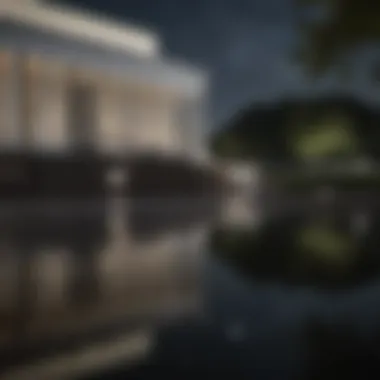
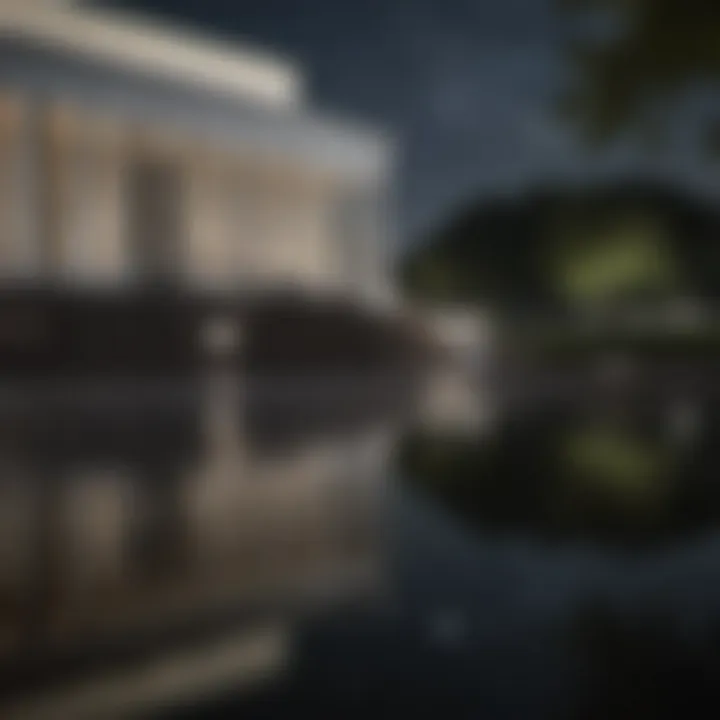
"Art and architecture might seem just designs and colors, but they are the very buildings blocks that shape our experience of a place and its people."
Throughout D.C., art and architecture intertwine, creating a rich tapestry that invites exploration and reflection. Whether through a gallery exhibition or a stroll past a historic monument, it’s clear that these elements are central to understanding not just the city itself but the broader narrative of the nation.
Dining and Cuisine
When it comes to exploring Washington D.C., the culinary scene is as vibrant as the city itself. From humble food stalls to opulent dining rooms, D.C. offers a rich tapestry of flavors that reflects its diverse culture and history. Dining and cuisine in this capital not only satiates hunger but also provides insights into the city’s heritage and social fabric. Visitors have the unique opportunity to taste the legacies of various communities, from traditional Southern cooking to international fare, underscoring the importance of food as a cultural bridge. This section delves into various facets of the dining experience in Washington D.C., highlighting iconic dishes, fine dining establishments, and casual eateries that define the city's gastronomic landscape.
Iconic D.C. Dishes
No exploration of D.C.’s dining scene would be complete without mentioning its iconic dishes. One standout is the half-smoke, a savory sausage that’s a favorite among locals. Typically found at street carts and casual spots, it’s a must-try for any visitor. You might stumble upon Ben's Chili Bowl, a landmark eatery that has been serving up these spicy delights since 1958.
Another classic is the D.C. crab cake, a dish that showcases the potency of local seafood. The balance of lump crab meat, spices, and breadcrumbs creates a sweet and savory profile that dances on the palate. Old Ebbitt Grill, famed for its charm and rich history, is one of the go-to places to savor this culinary icon.
- Half-smoke: A spicy sausage native to the D.C. area, often topped with chili and onions.
- D.C. crab cake: Made from local crab, it's a true representation of the city’s seafood culture.
Fine Dining Restaurants
For those seeking a more upscale dining experience, D.C. boasts numerous fine-dining establishments that elevate the culinary experience to an art form. One of the biggest names in this milieu is The Inn at Little Washington, renowned not only for its exquisite food but also for its picturesque setting in Virginia’s countryside. It offers a multi-course tasting menu that changes seasonally, inevitably leaving guests pondering the complexities of fragrance and flavor.
Another gem is Plume, located in The Jefferson Hotel. This restaurant combines meticulous service with innovative dishes inspired by local ingredients and European techniques. The ambiance is intimate, showcasing the fine details that make dining not just a meal but a memorable occasion.
Food Markets and Casual Eateries
For those who prefer a laid-back atmosphere, Washington D.C. is home to a plethora of food markets and casual eateries that offer an affordable yet delectable gustatory exploration. A prime example is Union Market, a bustling hub where food vendors offer everything from artisanal cheeses to gourmet tacos. Visitors can easily spend an afternoon wandering the stalls, sampling dishes while soaking in the vibrant energy of the crowd.
Furthermore, Eastern Market is not just a place for fresh produce; it also features vendors selling delicious ready-to-eat food, ranging from freshly made pastries to hearty brunch options.
- Union Market: A food hall that features multiple vendors, each representing different culinary styles.
- Eastern Market: Ideal for sampling local delicacies while soaking in community vibes.
Events and Festivals
Washington D.C. is not just a haven for history buffs and architecture enthusiasts; it’s also a vibrant tapestry of events and festivals that reflect the city’s diverse culture and community spirit. These occasions serve as a bridge connecting locals and visitors alike, allowing everyone to partake in the rich traditions and modern expressions that characterize life in the capital. The rhythm of D.C.'s events throughout the year illuminates the city’s unique character and offers visitors a deeper insight into its soul. Here, we'll delve into the various celebrations that paint the calendar.
Cultural Events Throughout the Year
D.C. is a thriving epicenter for cultural events, with activities scheduled throughout the year. From art exhibitions to music festivals, these events provide an excellent opportunity for both residents and tourists to immerse themselves in the city’s vibrant cultural scene.
One of the key highlights is the National Cherry Blossom Festival, which draws countless visitors every spring when the cherry blossoms bloom. This festival combines traditional Japanese culture with American festivities—featuring parades, performances, and art exhibits, making it a perfect example of cultural exchange.
Moreover, events like the D.C. Jazz Festival celebrate the city's rich musical heritage, featuring renowned artists and local talent alike, resonating through the streets until late into the night. The organized activities often include workshops, ensuring attendees not only observe but also engage firsthand with the art form.
Don’t forget Smithsonian Folklife Festival, which showcases the culture and traditions of different communities within the U.S. and beyond. What’s more? Most of these events are free, allowing people from all walks of life to enjoy, participate, and learn. The ability to engage with different cultures helps foster understanding and appreciation among attendees. This blend of learning and enjoyment can create lasting memories, making the events even more special.
Annual Celebrations and Observances
Every year, D.C. orchestrates numerous celebrations that highlight significant historical milestones and cultural commemoration. These observances, often steeped in tradition, attract attention locally and from afar. The Fourth of July celebration at the National Mall is a quintessential D.C. experience. The day is marked by a spectacular fireworks display, accompanied by music and festive activities that celebrate the nation’s independence.
Another notable annual event is Martin Luther King Jr. Day, where various ceremonies and educational events take place, emphasizing peace and community service. It not only honors Dr. King's legacy but also encourages public participation in service activities, promoting unity and social responsibility.
D.C. also hosts the Capitol Pride Parade, an event that showcases the city’s commitment to equality and diversity. It’s not just a celebration of LGBTQ+ pride; it’s a vibrant gathering of people coming together to advocate for rights and recognition. The energy of the parade reflects the city's dedication to inclusivity and justice.
Here’s a brief look at other annual celebrations:
- The National Book Festival: An event for literature lovers featuring discussions and signings with authors.
- D.C. Fashion Week: Showcasing emerging designers and providing a platform for local fashion artists.
- D.C. International Film Festival: A celebration of independent films from around the globe, promoting diversity in cinematic storytelling.
These celebrations not only entertain but they also educate and inspire. They offer residents and visitors a unique insight into the heart of Washington D.C.—a city that respects its past while looking towards an inclusive future.
"Participating in local events is like taking a tour of the city’s character; each celebration adds a layer to the rich tapestry of D.C.’s identity."
Practical Information for Visitors
Understanding practical information is vital when you're traversing the streets of Washington D.C. Planning ahead ensures travelers can maximize their time enjoying the sights, and knowing the lay of the land can save you from common pitfalls. Here’s a breakdown of essential elements, benefits, and considerations that can enhance your visit.
Transportation Options
Transportation in D.C. is both diverse and efficient, making it easier for visitors to navigate around. The Washington Metropolitan Area Transit Authority (WMATA) operates an extensive metro system that is the backbone for many commuters and tourists alike.
- Metro System: Trains cover the District and surrounding Maryland and Virginia, providing service to major attractions. A SmarTrip card can streamline your travel experience.
- Buses: Metro buses complement the Metro, covering areas that might be off the train line. They’re often less crowded and can be a scenic way to see the city.
- Bike Rentals: Services like Capital Bikeshare allow visitors to rent bikes at kiosks throughout the city. It’s a healthy and enjoyable way to cover more ground, especially along the scenic trails.
- Ride Shares: Services like Uber and Lyft are widely used in D.C. They offer flexibility and can be convenient for late-night outings.
With a little bit of planning around these options, you can hop from one site to another without breaking a sweat.
Accommodation Recommendations
Finding a place to stay in D.C. can be an adventure in itself. The variety ranges from high-end hotels with rich histories to cozy boutique lodgings that offer unique character.
Here are some notable areas to consider:
- Downtown: Hotels like The Willard InterContinental or The Hamilton provide immediate access to attractions like the National Mall.
- Dupont Circle: This neighborhood features various boutique hotels such as The Dupont Circle Hotel, offering a vibrant atmosphere with access to excellent dining and shopping.
- Georgetown: With its historic charm, staying at The Graham Georgetown means you can stroll the picturesque streets and enjoy upscale dining.
Consider your itinerary while selecting accommodations. Staying close to the Metro can make your visits to attractions even smoother.
Safety Tips and Guidelines
While D.C. is generally safe for tourists, exercising basic safety precautions is wise.
- Stay aware: Keep your belongings secure and stay vigilant, especially in crowded areas like tourist sites.
- Emergency services: Familiarize yourself with local emergency numbers. For non-life-threatening issues, contact the local police at their non-emergency line.
- Public Spaces: When utilizing public transportation, maintain awareness of your surroundings. Be careful with valuables.
- Local customs: D.C. has a diverse population, and understanding local customs can lead to a more pleasant experience.
Knowing practical information is like having a Map—each piece can guide you towards a more fulfilling exploration, allowing you to soak in all that Washington D.C. has to offer.







